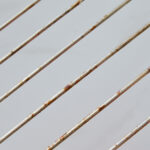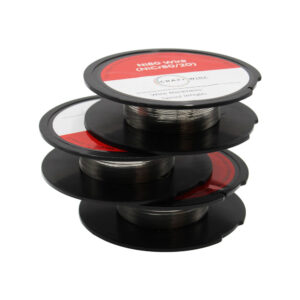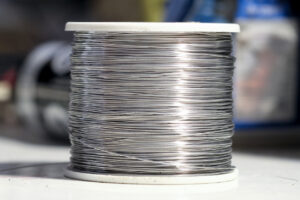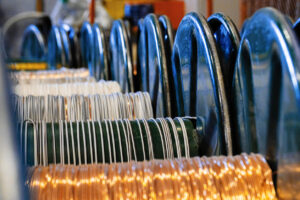In the realm of construction and engineering, the choice between iron and steel for structural wires has sparked a perennial debate. Both materials have been instrumental in shaping the built environment, each with its unique properties and applications. While iron boasts a rich history as one of the earliest metals utilised by humans, steel, its alloyed counterpart, has emerged as a powerhouse material in modern construction. This blog delves into the intricacies of the iron vs steel debate, exploring their characteristics, applications, and the factors influencing their selection in structural wire manufacturing.
Understanding Iron vs Steel
Iron, a chemical element with atomic number 26, holds a special place in human history, dating back thousands of years. Its abundance in the Earth’s crust made it one of the first metals to be utilised by ancient civilisations for tools, weapons, and structures. Iron’s notable properties include its strength, ductility, and magnetic nature. However, pure iron lacks the hardness required for many industrial applications, thus paving the way for the development of steel.
Steel, an alloy primarily composed of iron and carbon, alongside other elements such as manganese, chromium, and nickel, revolutionized the metallurgical landscape. The addition of carbon and other alloying elements imbues steel with enhanced mechanical properties, including greater hardness, tensile strength, and corrosion resistance compared to pure iron. This superior performance has propelled steel to the forefront of modern construction, making it indispensable in a myriad of applications, from skyscrapers to bridges and beyond.
Iron vs Steel: A Comparative Analysis
Strength and Durability: One of the primary considerations when comparing iron and steel is their respective strength and durability. While iron possesses decent tensile strength, steel surpasses it significantly due to its alloy composition. Steel’s enhanced strength and durability make it an ideal choice for structural wires subjected to heavy loads and harsh environmental conditions. Whether it’s supporting towering buildings or reinforcing bridges, steel outshines iron in terms of structural integrity and longevity.
Malleability and Formability: Iron and steel exhibit distinct differences in terms of malleability and formability. Pure iron is relatively soft and malleable, allowing it to be easily shaped and formed into various structures. However, steel offers greater versatility in this regard, thanks to its ability to be forged, rolled, and cast into complex shapes without sacrificing strength. This characteristic makes steel the preferred choice for intricate structural designs that demand precision and customisation.
Corrosion Resistance: Corrosion poses a significant threat to metal structures, especially in outdoor environments exposed to moisture and harsh chemicals. While iron is prone to rusting when exposed to oxygen and moisture, steel’s alloy composition provides inherent corrosion resistance. Stainless steel, in particular, contains chromium, which forms a protective oxide layer on its surface, shielding it from corrosive elements. This superior resistance to rust makes steel a more durable option for structural wires in applications where exposure to the elements is unavoidable.
Cost Considerations: Another crucial factor influencing the iron vs steel debate is cost. Historically, iron has been more economical than steel, making it a preferred choice for certain applications where cost-effectiveness is paramount. However, advancements in steel production technologies have narrowed the cost gap between the two materials, making steel increasingly competitive in terms of affordability. Additionally, the long-term durability and performance benefits of steel often outweigh its initial higher cost, making it a more cost-effective investment in the context of lifecycle expenses.
Environmental Impact: In an era of heightened environmental awareness, the sustainability of construction materials has become a pressing concern. While both iron and steel are recyclable metals, steel holds a distinct advantage in terms of environmental impact. Steel recycling rates are higher than those of iron, with the recycled steel retaining its properties without degradation. Furthermore, steel production processes have become more energy-efficient and environmentally friendly over time, reducing their carbon footprint compared to traditional iron smelting methods.
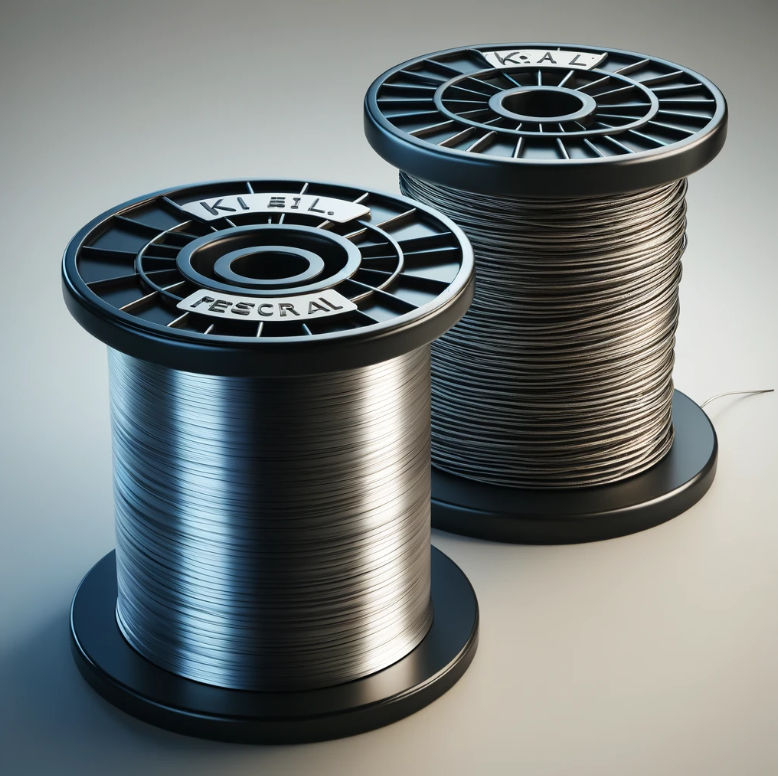
Applications in Structural Wire Manufacturing
The choice between iron and steel in structural wire manufacturing depends on the specific requirements of the application. Iron wires find utility in situations where moderate strength and cost-effectiveness are prioritised over longevity and corrosion resistance. Common applications of iron wires include fencing, agricultural fencing, and basic structural reinforcements where exposure to environmental elements is minimal.
On the other hand, steel wires dominate in demanding structural applications where strength, durability, and corrosion resistance are paramount. From suspension bridges and high-rise buildings to industrial infrastructure and marine installations, steel wires offer unmatched performance and reliability. Additionally, advancements in steel alloying and wire manufacturing technologies have expanded the range of applications for steel wires, including specialised industries such as aerospace and automotive engineering.
Here’s a table outlining the pros and cons of iron and steel wire:
| Aspect | Iron Wire | Steel Wire |
|---|---|---|
| Pros | – Cost-effective | – Superior strength and durability |
| – Malleable and easy to shape | – High tensile strength | |
| – Suitable for basic applications such as fencing | – Corrosion resistance (especially stainless steel) | |
| – Good electrical conductivity | – Versatility in applications | |
| – Recyclable | – Longer lifespan compared to iron | |
| Cons | – Prone to rust and corrosion | – Higher initial cost compared to iron |
| – Lower tensile strength | – Less malleable compared to iron | |
| – Limited applications in harsh environments | – Requires specialized equipment for shaping and welding | |
| – Less durable in demanding structural applications | – Environmental concerns related to energy-intensive production processes |
The iron vs steel debate in structural wire manufacturing encapsulates a complex interplay of factors, including strength, durability, cost, and environmental impact. While iron holds a storied legacy as one of humanity’s earliest metals, steel has emerged as the material of choice for modern construction, thanks to its superior mechanical properties and versatility. However, both materials continue to coexist in the market, each finding its niche based on specific application requirements and economic considerations. Ultimately, the decision between iron and steel hinges on striking the right balance between performance, affordability, and sustainability in the pursuit of building a resilient and enduring built environment.
We offer also a massive range of stainless steel wire and nichrome wire through our store. Choose the wire that you want to work with and we’ll get spooling.
If you’re interested in learning more about wire, check out our other blog on Everything You Need to Know About Wires.
We are also proud to supply this product on our highly popular eBay store, check us out there too.
Thank you for checking out our site.

Nichrome Wire Safety: Top Tips for Working Safely

Best Wire for Electronics Projects

Is Ni80 Wire Suitable for DIY Heating Elements

Wire Grades Explained
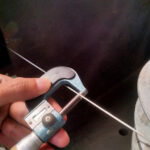
How Wire Diameter Affects Strength and Flexibility

How to Cut and Shape Wire for Custom Applications

Can Wire Be Used in 3D Printing?

How Wire Composition Affects Conductivity
